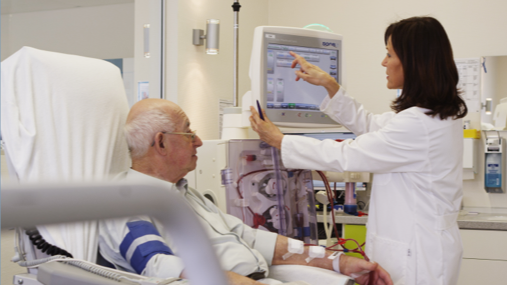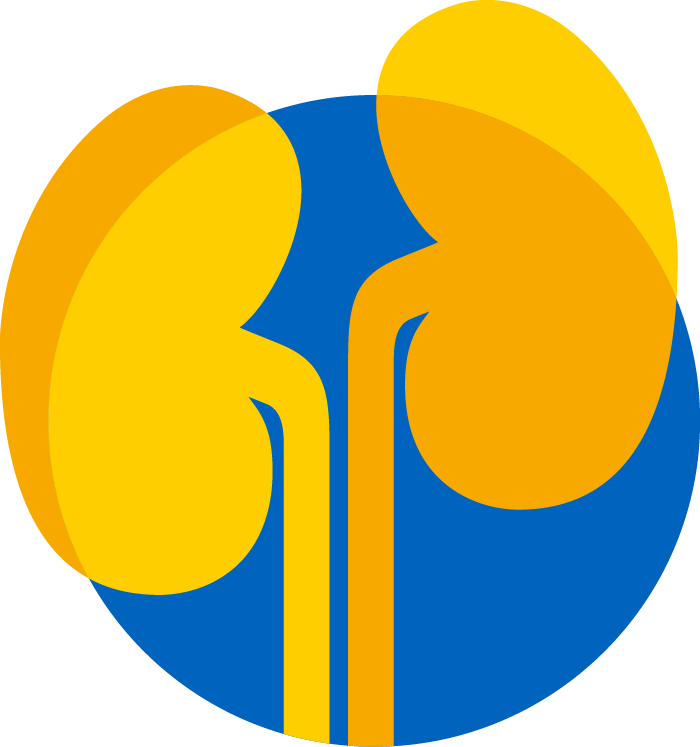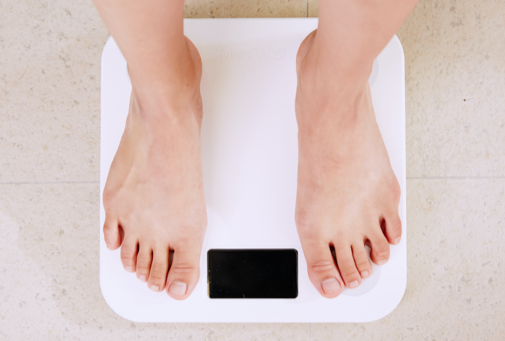Nutrition and dialysis
The dietary requirements in the dialysis phase differ significantly from pre-dialysis.
Haemodialysis
Nutrition is an important part also in dialysis treatment. Even if haemodialysis sessions remove wastes from your blood, it is of importance to reduce fluid that can build up in your blood between the sessions.
You will be asked to change some things about your diet once you start dialysis. For example, you will have to limit the amount of fluid you drink each day. You will also be asked to limit your intake of certain minerals (e.g., sodium, phosphate and potassium). It might be possible that you may not need to follow each of these nutrition components. Please be sure to check with your dietician or physician before making any nutritional changes.1
One main change compared to earlier stages of chronic kidney disease is the higher need for proteins. During each dialysis session a certain amount of amino acids gets lost through the filter membrane of the dialyser. To prevent malnutrition, it is important to eat sufficient amounts of protein now.1
----------------------------
Sources
1 National Kidney Foundation https://www.niddk.nih.gov/health-information/kidney-disease/kidney-failure/hemodialysis#changes (Accessed 04.01.2021)

On haemodialysis there is a high risk of protein energy wasting. Additionally to the treatment-associated protein losses, other factors contribute to this condition, e.g. less appetite due to the symptoms of chronic kidney disease and catabolism secondary to haemodialysis. Thus, it is important that you eat enough! Sometimes it is necessary to take supplements, which provide you with vital food ingredients. Please contact your physician to discuss with her/him whether supplementing energy or vitamins are necessary.
Although many components of a dialysis diet are the same for people
on hemodialysis or peritoneal dialysis, there are also differences:1
Peritoneal dialysis
Some of the differences for patients on peritoneal dialysis (PD) vs. patients on haemodialysis (HD)1
Calories
Enough calories are required for the body to function and not become malnourished. For PD patients, some calories are provided by the dialysate solution as it contains dextrose and therefore provides calories which in turn decreases the need for as many calories from food. That's why PD patients typically need to eat fewer carbohydrates than HD patients do.
------------------------------------------------
Sources
1 www.davita.com/diet-nutrition/articles/advice/dialysis-diet-differences-hemodialysis-and-peritoneal-dialysis (Accessed 18.12.2020)
Potassium
High potassium levels are more common in people on haemodialysis, therefore normally they need to limit their potassium intake more than PD patients. As the PD treatment occurs daily, the potassium removal is normally more efficient.
Fluid balance
HD patients may feel the negative effects of fluid imbalance normally more than PD patients. This is why the fluid allowance for PD patients is usually more generous than for patients on HD.
High protein need in dialysis

------------------------------------------------
Sources
1 National Kidney Foundation www.kidney.org/atoz/content/nutripd (Accessed 03.12.2020)
One main change compared to earlier stages of chronic kidney disease is the higher need for protein. As your body loses peptides (components of proteins) through the dialysis treatment, you should eat more protein now. Additionally to protein losses there are other factors that may promote protein-energy-malnutrition. For example, many patients have less appetite due to high concentrations of glucose in their blood (resulting from glucose absorption from the dialysis fluid) and the symptoms of chronic kidney disease. Thus, it is important that you take in sufficient amounts of proteins and other nutrients!1


